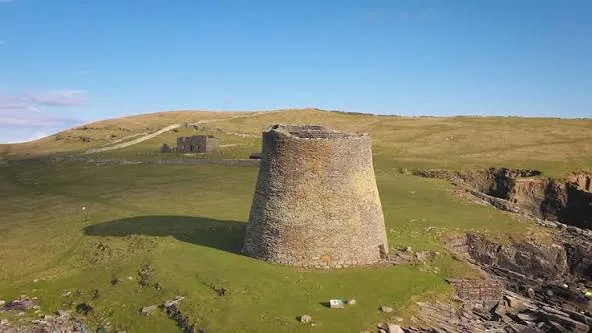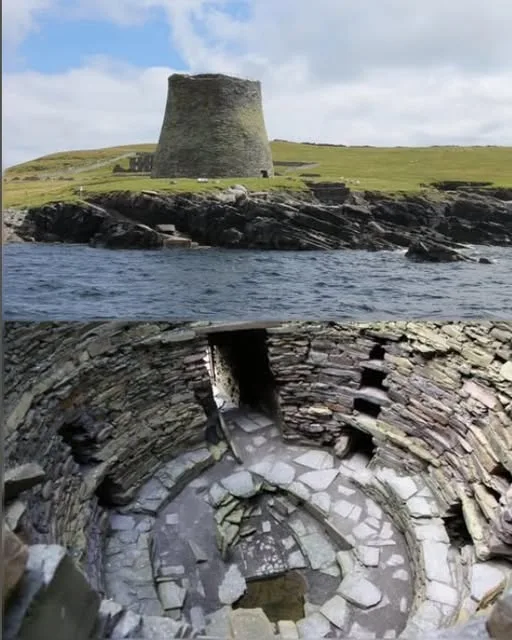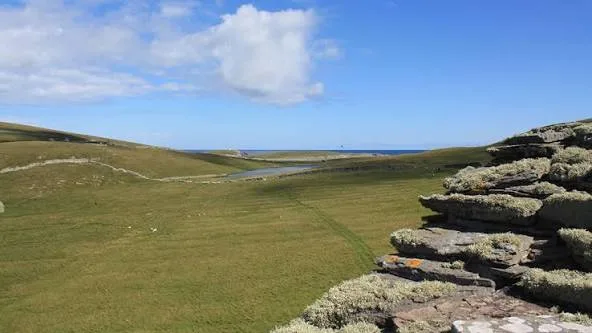Stepping onto the island of Mousa in Shetland, one is immediately struck by the towering presence of Mousa Broch. This incredible dry-stone tower, standing 43 feet (13 meters) tall, is far more than just a pile of ancient rocks; it’s a testament to Iron Age ingenuity, a potential high-status residence, and a refuge that even found its way into Norse sagas.

Engineering marvel
Mousa Broch’s most defining feature is its double-walled, dry-stone construction. This means that instead of using mortar, the builders skillfully stacked large stones to create an inner and outer wall, creating a hollow space between them. This technique, thought to date back to around 300 BC, has allowed the structure to withstand the test of time, and is a major reason for its exceptional state of preservation.
Inside the Broch
The interior of Mousa Broch is as fascinating as its exterior. Visitors can still navigate the winding staircase built within the double walls, providing a unique insight into the cleverness of the original inhabitants. This staircase leads to the top of the broch, offering stunning views of Mousa Sound and the surrounding landscape.
Within the thick walls are also found “wall cells” – small chambers that likely served as living or storage areas. The main inner chamber, which would have been at the center of the tower, could have been used for communal gatherings or even for sheltering livestock, whose body heat would have helped warm the inhabitants on the upper floors.

Echoes in the sagas
The historical significance of Mousa Broch is further cemented by its appearance in two well-known Norse Sagas: Egil’s Saga and the Orkneyinga Saga.
- Egil’s Saga: This saga tells the story of an eloping couple, Bjorn Brynjulfsson and Thora Roaldsdottir, who were shipwrecked on Mousa around AD 900 while fleeing Norway for Iceland. They found temporary refuge in “Morseyarborg”, the Old Norse name for Mousa Broch, where they spent the winter and even got married.
- Orkneyinga Saga: This saga recounts the story of Earl Erland Ungi who abducted Margaret, the mother of Earl Harold, and took her to Mousa Broch in AD 1153. Earl Harold laid siege to the broch but, frustrated by its formidable defenses, found it “an unhandy place to get at”, according to Historic Environment Scotland.
These tales provide valuable context to the broch’s enduring presence on the Shetland landscape and its role as a significant landmark and a place of refuge in a challenging environment.

A window to the Iron Age
Mousa Broch stands as one of the best-preserved examples of Iron Age architecture in Scotland, according to the Facebook page Archaeology & Civilizations. Its remarkable state allows us to appreciate the skill and labor involved in its construction and offers a glimpse into the social dynamics, architectural prowess, and daily life of ancient Scottish communities. The ongoing preservation efforts ensure that this incredible piece of history will continue to inspire awe and curiosity for generations to come.





